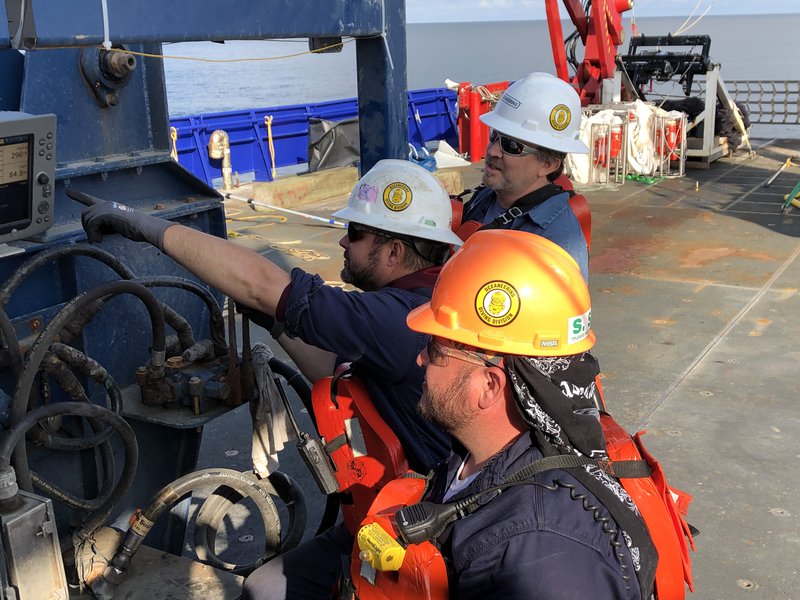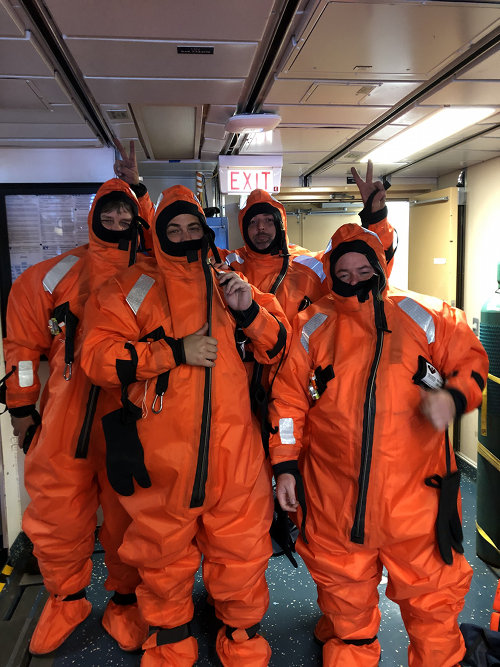
By Katrin Iken, Professor in Marine Biology, College of Fisheries and Ocean Sciences - University of Alaska Fairbanks
July 23, 2019
One of the most important things when being on a research vessel – or any vessel – is safety. It also is one of the first things that the ship crew goes over in great detail with the new science team. Just imagine, you are days away from the next doctor’s office or hospital emergency room. While there are several trained EMTs (Emergency Medical Technicians) on board, there is a limit to what they can do in case of a serious accident. Hence, our best course of action is to prevent accidents as much as possible and make sure everybody is aware of the specific dangers that are associated with being and working on a ship.
Everybody knows how much it hurts to get your fingers caught in a regular door – the heavy metal doors on a ship that secure the inside of the ship against the heavy weather outside can easily take those fingers off! Ouch!!!! Not something anybody wants to experience. There is no soft carpet to prevent a knee from getting scraped when one falls on a ship, everything here is hard metal. So, it is essential that everybody is well aware of the specific dangers of living and working in a ship environment. Wearing all the required personal protection equipment (PPE) is a big step in that direction. That includes wearing a life jacket, a hard hat, gloves, and steel-toed boots when working on deck.

Operations on deck require everybody to wear a hard hat, a floatation device, and gloves. Image courtesy of Katrin Iken, University of Alaska Fairbanks. Download larger version (jpg, 4.9 MB).
One of the unique dangers of being on a ship is the possibility of a person falling over board or having to evacuate a ship, should the ship sink. While routine operations and safety features on a ship prevent this as much as possible, one always has to be prepared, just in case. That is why the ship and science crew undergo specific training for what to do in such a scenario. When the ship alarm sounds, every science and crew member has a specific location where to meet, called the muster station. There, a roll call is done to ensure that everybody is accounted for. Every person on board has a dedicated life jacket and full-body survival suit that he or she brings to the muster station in case of an alarm. These suits can be put on to allow a person to float and survive if her or she has to abandon the ship and enter the water in case of an emergency. Putting on one of these survival suits takes a bit of practice, which is exactly what the emergency training helps us to learn. While we may look and feel like some orange aliens from outer space in these suits, I am sure we all would be immensely grateful to have these suits in an emergency situation.

The science crew practicing putting on survival suits in case of an emergency. Image courtesy of Katrin Iken, University of Alaska Fairbanks. Download larger version (jpg, 5.2 MB).